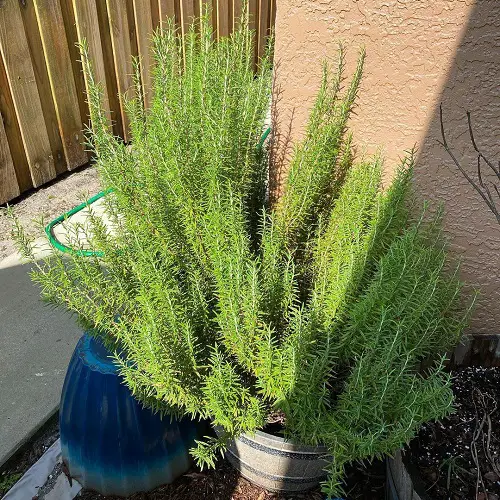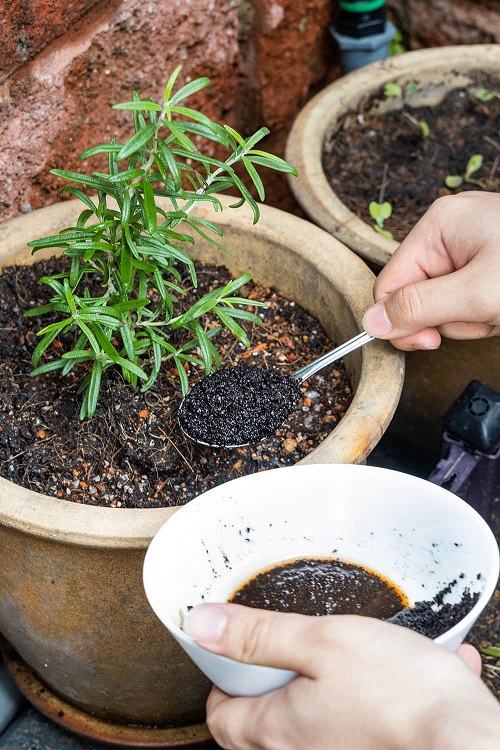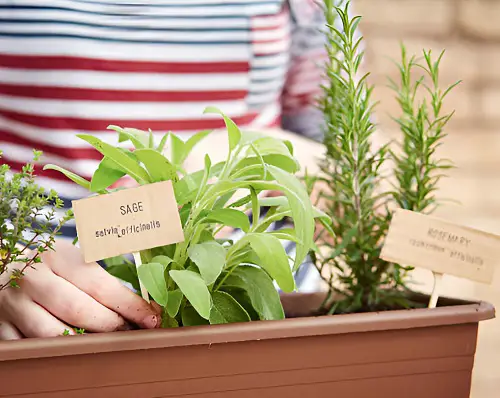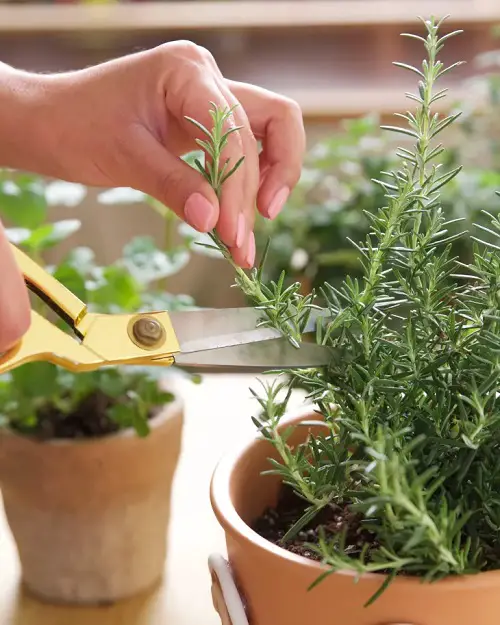Follow these Hacks for a productive and thriving Rosemary plant, and never run out of flavor in your culinary creations!
Rosemary is one of the easiest herbs to grow if you grow it right; if not, it can be a bit tricky to maintain and even harder to keep in the pink of its health. Discover those right things in this article to grow the most flavorful, productive, and thriving rosemary plant.
Hacks for Thriving Rosemary
1. Provide Sunniest Location

Rosemary plants love to sunbathe under intense, full sunlight for at least 7-8 hours a day. So, if you see your rosemary losing its charm or if its distinctive aroma does not overwhelm you, the reason may be a lack of exposure to sunlight.
Sunlight helps the plant maintain a healthy form and produce the essential oil that exudes the famous fragrance and gives the leaves its flavor. Find out the sunniest location in your garden and locate your rosemary there.
If you’re growing it indoors, keep this herb in a south-facing window so it gets what it needs. If it is hard to fulfill the sunlight requirement naturally, try investing in LED grow lights to supplement it.
2. Ensure Best Drainage
Rosemary plants hate wet feet, so using containers with good drainage is a must. This helps the plant by reducing the risk of root rot and prevents the collection of unused or unabsorbed water at the bottom of the pot, which can lead to fungal diseases.
If you’re growing it on the ground, select a sloppy spot where water never accumulates and drains down quickly.
Make sure that the rosemary pot you choose has drainage holes at the bottom. Shredded leaves or organic matter in the soil can also help increase drainage.
3. Provide Alkaline Soil
Rosemary is from the Mediterranean region, where the weather is warm and the soil is neutral or slightly alkaline.
While it can tolerate pH levels as low as 5.5 to 6, which is acidic. This herb grows best when the soil is moderately alkaline, with a pH of around 7 to 7.5, this is the secret of growing best rosemary.
For growing in a container, use a potting mix, preferably designed for succulents or cacti, that contains coarse sand or perlite and mix about 20-30% organic matter like compost or manure in it.
Another recipe is to mix 2 parts of this regular potting mix: 1 part perlite, 1 part compost, and 1 part sand. This will create a well-draining mix that rosemary thrives in.
4. Harvest Only the Top Two Inches

Rosemary plays an important role in adding flavor to your dishes, but don’t be too voracious—it’s not the gift that keeps giving! Only harvest the top two to three inches of each mature stem so that it promotes new growth and doesn’t finish major portions of the plant.
If overharvested, the plant will take a prolonged period of time and energy to come back to its original form.
When the stems are at least six inches long, use sharp scissors to snip off an inch or two of the top parts. Doing it properly will encourage the plant to become bushier and produce more stems and leaves.
5. Use Crushed Eggshells
Crushed eggshells are a healthy breakfast for humans as well as your rosemary plants! Rosemary thrives when provided with a bit of lime in the environment, and crushed eggshells happen to provide the same essential calcium present in lime. This promotes strong cell walls and healthy growth.
Don’t forget to wash the eggshells. Once done, crush the eggshells into small bits and pieces before usage and sprinkle them evenly around the base of the plant. Over time, the eggshells will break down and enrich the soil.
6. Try Coffee Grounds

Coffee grounds can wake up your rosemary just like they do to humans. They act as a mild, slow-release fertilizer but, most importantly, improve the texture of the soil, providing better air circulation for the roots.
Simply sprinkle a tablespoon or two of used coffee grounds around the base of the plant or mix them into the soil once or twice during the growing season.
7. Fish Tank Water
If you have an aquarium where fishes swim freely, it is no secret that the water is going to get a bit “murkier.” However, this “murky” water can be the best natural fertilizer for rosemary as fish tank water is an excellent, nutrient-rich fertilizer.
The water contains beneficial nutrients from fish waste that promote healthy growth. You can read more about it here if you want to learn about the application.
8. Companion Planting with Sage
Sage and rosemary go hand in hand like lemonade on a hot summer’s afternoon. As both herbs require the exact growing needs and environments, planting them side by side can help them thrive by repelling pests and improving growth. Sage can also protect the health of rosemary due to its pest-deterrent properties.
9. Cinnamon Powder
A rather unconventional yet effective way to protect your rosemary plant, especially in its early days or when you propagate it from cuttings. Simply sprinkle cinnamon powder over the soil. Cinnamon has natural antifungal and antibacterial properties that protect the young plant and prevent the cuttings from rotting.
10. Don’t Fertilize Often
If you thought providing more fertilizer to your rosemary would help it, think again! Rosemary seldom requires external fertilization and thrives better in soil that is rich in organic matter. However, you do need to feed it less often than other herbs like basil. Fertilizing less will improve its flavor and it will taste better!
11. Never Prune it Too Much
Snipping away excess dying or old foliage can pave the way for newer, more attractive, and flavorful foliage to grow. So, every time you see your rosemary getting a bit too bushy, get those shears ready!
Hard pruning is never appreciated by this herb because rosemary doesn’t form fresh growth on those old woody stems, so try sticking to the malleable tips where you see new shoots appearing. If you do choose to cut away the woody stems, only look for old, dead, and diseased ones.



